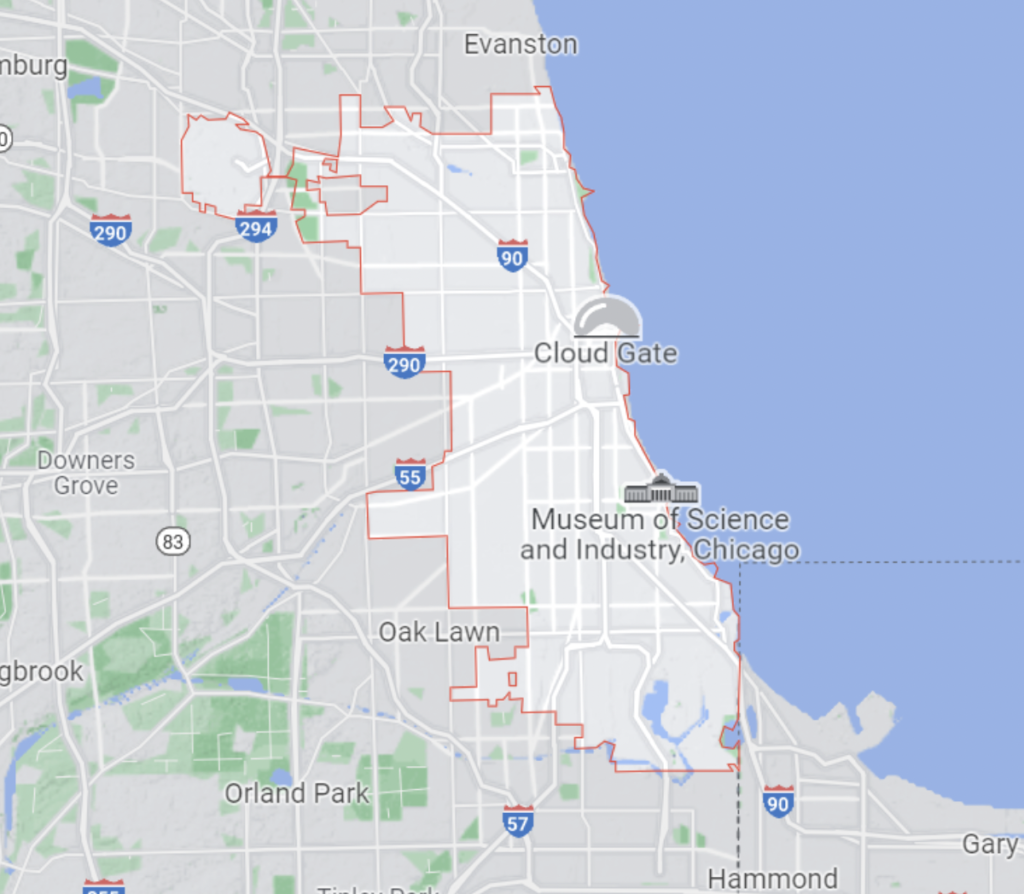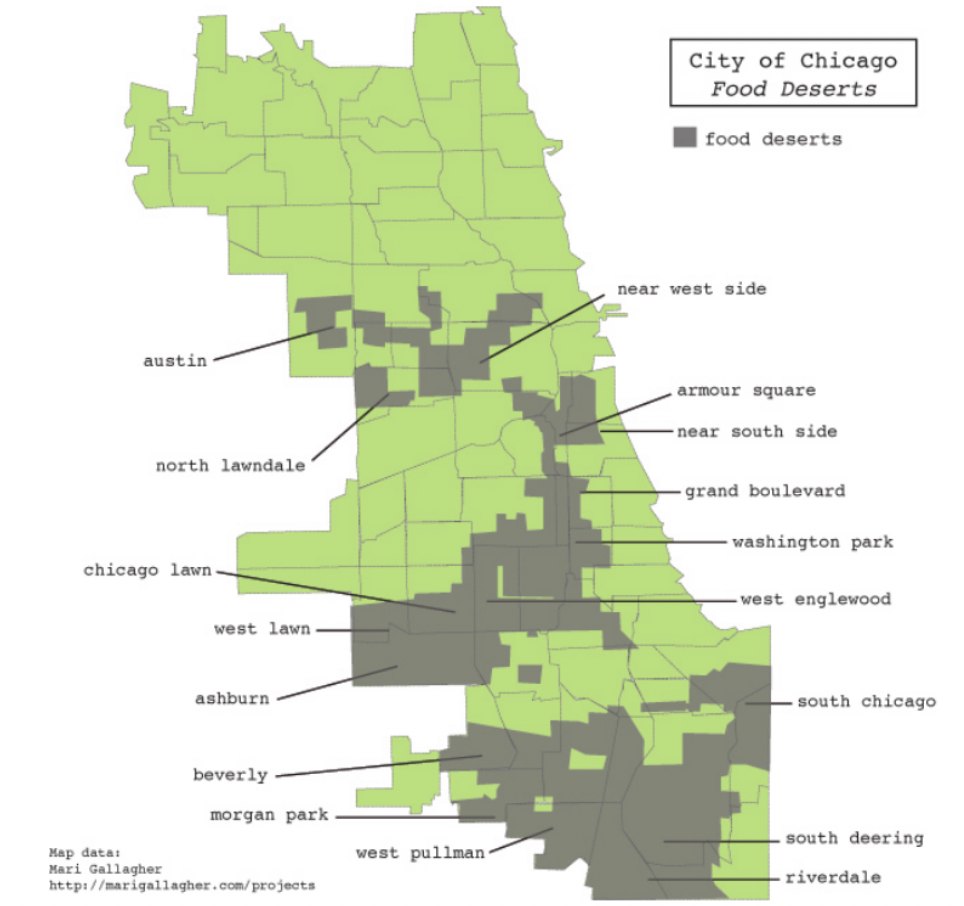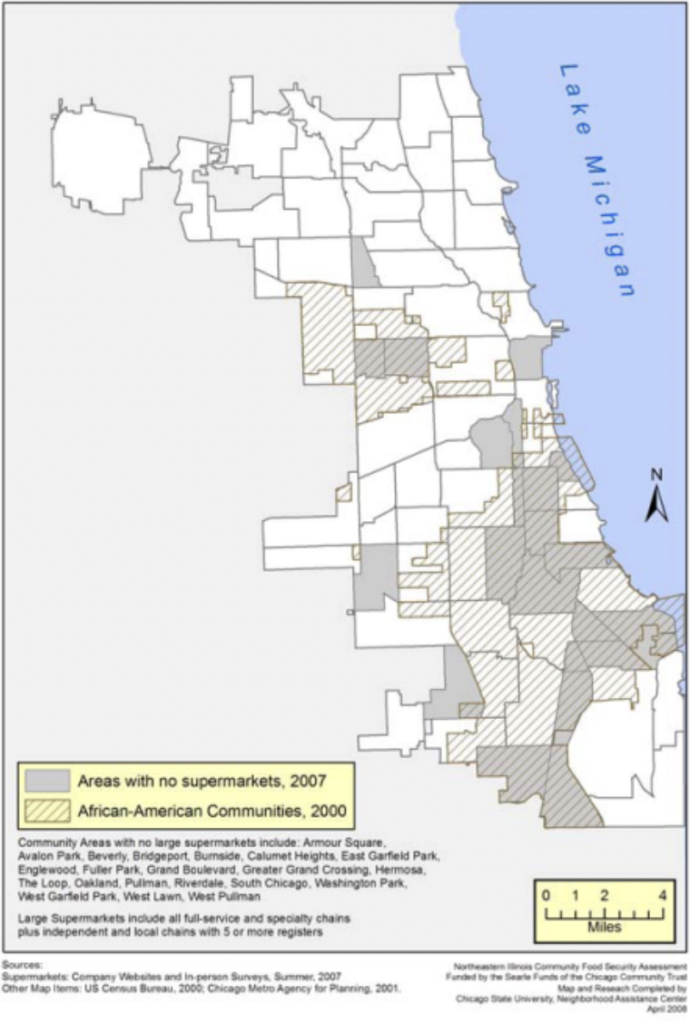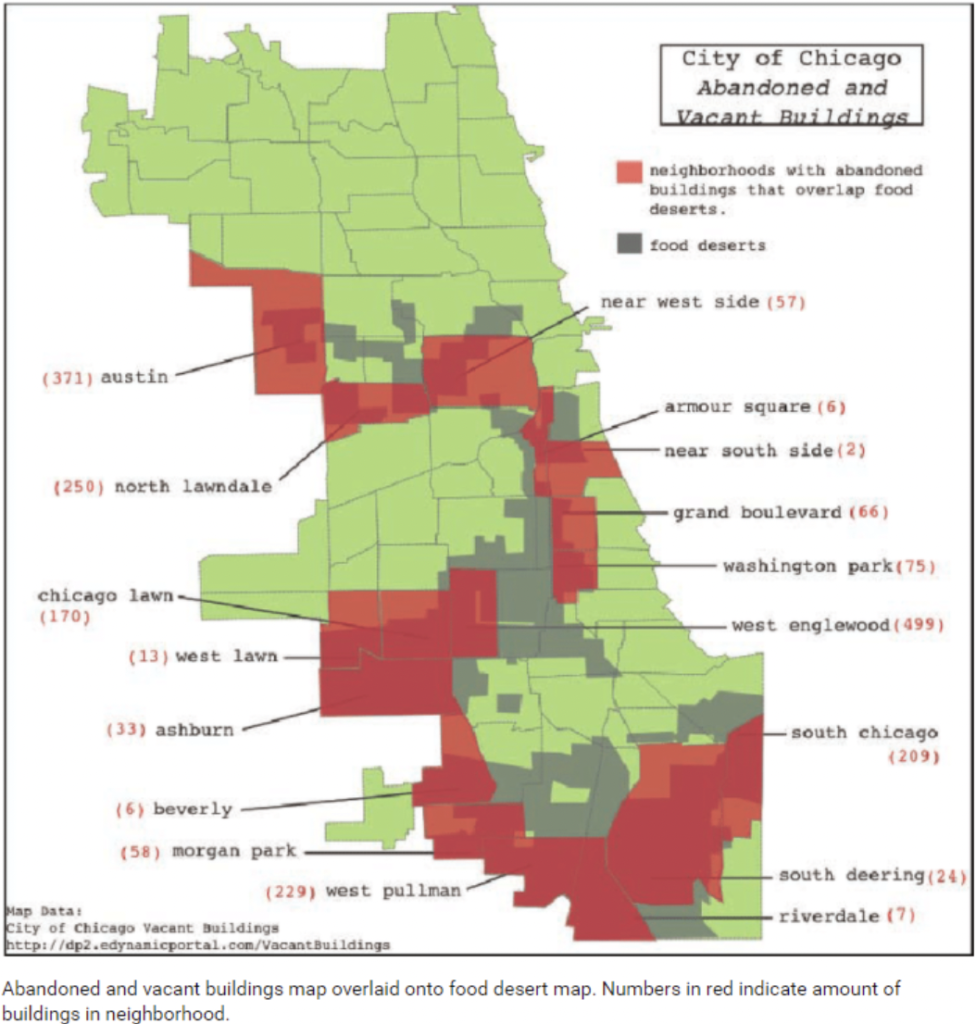What Is A Food Desert?
A food desert is a geographical area where it is difficult to buy healthy, nutritious food at an affordable price. Food deserts include areas where travel to a grocery store is difficult, and in areas where healthy food may be available, but at an unaffordable price.
Chicago is among the top ten cities in the U.S. with the most or largest food deserts.
Learn more: What Are Food Deserts?
Fast Facts About Food Deserts in Chicago
- 500,000 people in Chicago live in an official food desert. An additional 400,000 people live in neighborhoods with mostly fast food restaurants and no nearby grocery stores (Gallagher 2006).
- Chicago has 22 communities that are officially declared food deserts (USCCR)
- Illinois has the 18th highest adult obesity rates in the U.S (State Obesity Data).
Why Are There Food Deserts In Chicago?
Food deserts are a socio-economic problem that tend to occur in specific neighborhoods as a result of a lack of proper aid and investment in that neighborhood.
Food deserts are found in Chicago in neighborhoods with high poverty levels. These areas have lower access to transportation, making it more difficult to get to a grocery store.
Food deserts are also disproportionately found in areas where the residents have lower levels of education and high unemployment rates. Areas with food deserts also have high rates of abandoned or vacant buildings.
Food deserts are more likely to occur in primarily Black communities in Chicago. A national 2014 study showed that even in areas of equal poverty, Black communities are less likely than communities of other races to have access to grocery stores and fresh food (Bower et al. 2014).
Where Are There Food Deserts In Chicago?
Areas in Chicago with low-income and low-access to stores, as well as low vehicle access are food deserts.
This map provides an overview of where food deserts are located in the city of Chicago and surrounding areas. Any area showing color is a food desert. These areas closely overlap with low-income areas.

The map below provides a more zoomed-in view of food deserts in Chicago by community area. Source: Van Scoik 2010


Food deserts also occur more frequently in primarily Black neighborhoods. A 2018 study showed that African Americans make up only around a third of Chicago’s total population, but that almost 80 percent of African Americans live in low food-access areas (Kolak et al. 2018). The map below shows the disproportionate overlap between Black communities and food deserts in Chicago.

Lastly, food deserts also occur in neighborhoods with high numbers of abandoned or vacant buildings. The map below shows the overlap of food deserts and areas with vacant buildings.

Solutions
The first step in disrupting food deserts in Chicago is researching where food deserts exist. Illinois began to address this in 2017, with the passage of a law that requires the Department of Public Health to provide an annual report identifying food deserts in the state.
Beyond research, multiple solutions are needed to address food deserts.
Increasing the Number of Grocery Stores
Some efforts have focused on increasing the number of grocery stores within Chicago. However, a 2018 study from University of Chicago found that although the number of supermarkets in the whole city of Chicago actually increased between 2007 and 2014, they did not benefit low food access areas (Kolak et al. 2018). This may be because they were not in close proximity, or because residents simply could not afford healthy food, even if it was close by.
This study shows that solutions must be implemented thoughtfully and intentionally.

Increased Access To Vehicles And Other Public Transportation Systems
In addition to creating more healthy food options locally, increasing transportation options can help reduce food deserts.
One method to increase transportation to grocery stores is to build up better public transportation. This may include adding a bus stop or even creating a shuttle system within the town.
Additionally, Lyft ride sharing created the Grocery Access Program to discount the cost of rides to grocery stores. This program has been piloted successfully in Washington D.C. in 2019, and has expanded to Chicago since then.
Other Solutions
Other solutions that could help eliminate food deserts in the city of Chicago include:
- Financial incentives and support for neighborhood-based grocery stores and farmers markets with discounted prices
- Increased financial assistance for residents of food deserts to buy food
- Increased community gardens and urban farming
- Restrictions on where dollar stores can be, as they displace grocery stores
- Increased public health education to encourage healthy eating
Some of these solutions are already being implemented.
Case Study: Englewood
Englewood is one of 77 community areas in Chicago. To its west side is West Englewood, which is often also considered Englewood. The neighborhood is on the South Side of Chicago.

Englewood is considered a food desert. This is due to low access to transportation and low-incomes. For example, nearly half of people in Englewood lack access to a vehicle, while only 12.8% of people in the greater Chicago area lack a vehicle.
Englewood follows the classic characteristics of where food deserts are most commonly found. Compared to the rest of the Chicago metropolitan area, Englewood has a lower education level, lower income, and a larger non-white community.
- Only 6.9% of Englewood residents have a Bachelor’s Degree, compared to 23.9% of people in the Chicago area.
- Additionally, 55.5% of Englewood residents have a household income of less than $25,000, compared to only 17% of residents of the Chicago metropolitan area.
- 94.6% of Englewood residents are Black compared to 16.6% of the people in the Chicago metropolitan area (Chicago Metropolitan Agency for Planning 2021).
- Englewood has a higher rate of abandoned buildings, with the highest number (499) in 2010 (Van Skoik 2010).
Many solutions have been suggested to increase Englewood residents’ access to healthy food. For example, Whole Foods partnered with local community groups to create “Englewood Square,” a new development with a Whole Foods store that brings healthy food and health education to the neighborhood. About 40% of the Whole Foods employees hired are Englewood residents.
Englewood Square was subsidized by city land subsidies, federal tax credits, and crowdfunding (Beals 2017). This is a good example of how financial incentives and support can encourage grocery stores to open in food deserts.
However, Whole Foods prices may still be too expensive for Englewood residents, and may not fully address the deep-seated issues the community faces. Solutions beyond creating more grocery stores are necessary to truly disrupt the food desert.